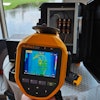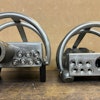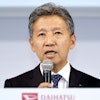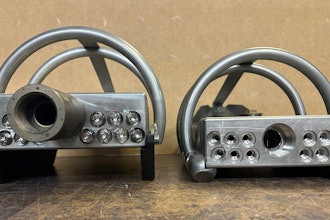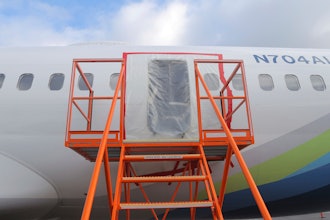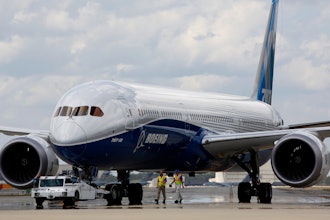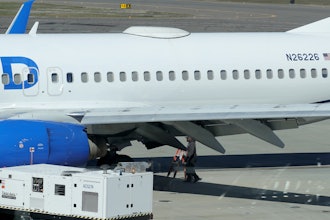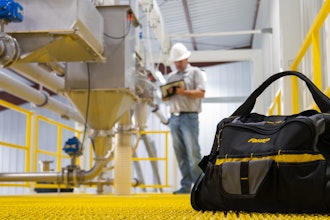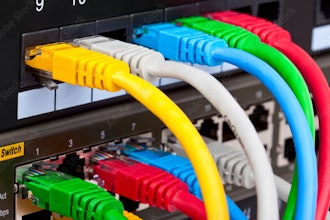This article first appeared in IMPO's May 2012 issue.
Compressed air might be one of those routinely available products that the average manufacturer doesn’t really think about on a day to day basis. Considered a basic, albeit vital, staple for a variety of manufacturing operations, this “fourth utility” (behind water, electricity, and natural gas) is the number one use of energy for many manufacturers. Compared to the other three utilities, compressed air is also the most expensive when calculated on a per unit energy delivered basis. According to the U.S. Department of Energy, manufacturers spend over $5 billion on compressed air systems every year, making compressed air systems a major investment for any manufacturer.
The ability to monitor and control the components of a compressor system has given manufacturers the ability to create more efficient systems, collect data, and minimize the costs of their operation—all from the one central location, such as a control room, or even a Blackberry. “The most significant impact of compressor day-to-day monitoring to customers is energy savings,” says Dan Potter, marketing analyst with Cameron Process & Compression Systems. “The Maestro Universal can save customers $25,000 in electricity on average per year.”
The Maestro Universal control system can maintain compressor pressure within one to two pounds per square inch of a set point and reduce air leakage losses to help a manufacturer improve efficiency. It also includes a built-in web server that allows for long-distance compressor monitoring. “The Maestro Universal could be monitored on a computer by an operator in a control room, eliminating the need to have a person pressing buttons on the machine itself,” Potter says. It is also possible for the Maestro panel to be accessed from a remote monitoring location. One of its features is its ability to function as “a consolidated control center that monitors system performance from multiple job sites,” he explains, “or by a neurotic plant manager on vacation using a BlackBerry.
“This feature increases in utility for customers with multiple compressors, so the system of compressors can be monitored from a control room.”
More and more sophisticated software management solutions are becoming widely available to help plant operators manage their compressed air systems. These controls are especially suited to systems with multiple compressors to orchestrate operation and air delivery. “Precise pressure regulation provides energy cost savings by reducing system pressures and eliminating blow-off waste,” Potter explains. All of the compressors within a system can be coordinated to optimize performance by running compressors at their most efficient design points while modulating a single compressor to adjust to variations in system demand. Network controls use a compressor’s microprocessors linked together to form a chain of communication that makes decisions to stop/start, load/unload, modulate, vary displacement, and vary speed. The modulating compressor can also be rotated, either manually or by using a panel scheduling feature to balance usage among all compressors in the system. “Like rotating your car tires to even wear and maximize use,” explains Potter.
Compressed air system controls enable compressors to run as efficiently as possible, optimally matching output to system demand. “The ability to run at optimum speeds directly translates into the ability to meet both the high pressure requirement and the high efficiency preference,” Potter says. These controls can also protect a potentially thousands of dollars investment.
He adds that Cameron’s Maestro Universal control panel features advanced surge protection, which will prevent the flow rate from dropping to levels that will cause a surge. “In short,” Potter explains, “pressure in the compressor drops below system pressure and the compressor runs backwards.” The panel comes programmed with a recommended surge offset line specific to each machine, but the surge offset line can also be adjusted by operators.
System controls have the ability to monitor all components in the system, and the results can then be viewed remotely, including the pressure and flow for the system and at machine discharge, vibration levels, and oil pressure and temperature. High oil temperatures and vibration readings may indicate a problem with the compressor, and alarms notify operators of the issue if a set point exceeds a preset value. Once that value is exceeded, system controls are capable of shutting down a machine if the set point continues to rise (or drop) past a specified threshold. “These alarms can be adjusted by to provide a more conservative warning system to protect the compressor,” Potter explains.
The U.S. Department of Energy stresses the importance of monitoring compressor control: “In any case, careful consideration should be given to compressor system control selection because it can be the most important single factor affecting system performance and efficiency.”

